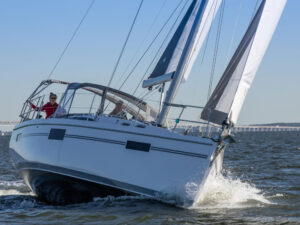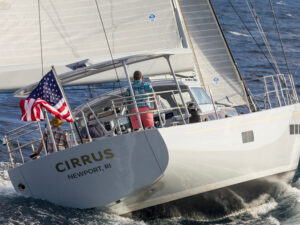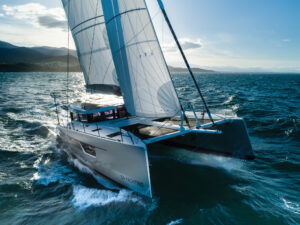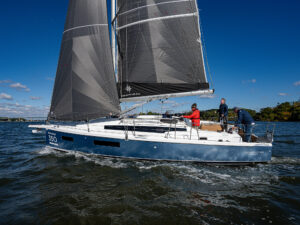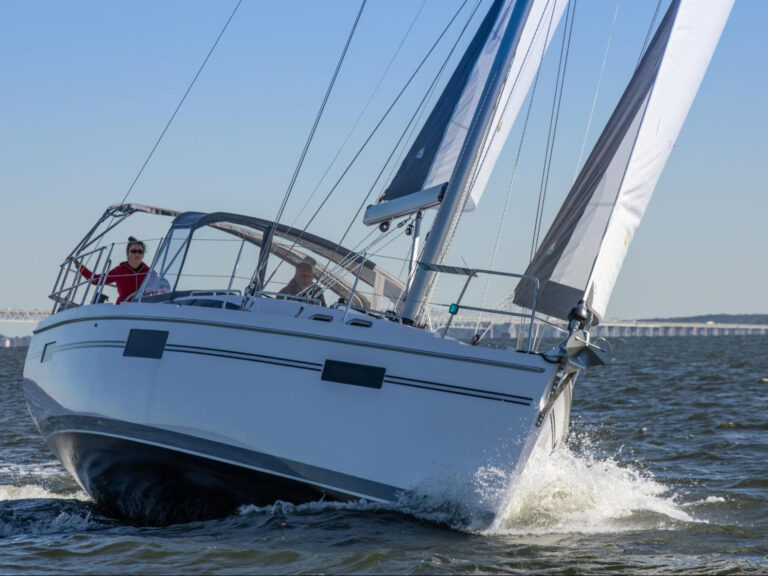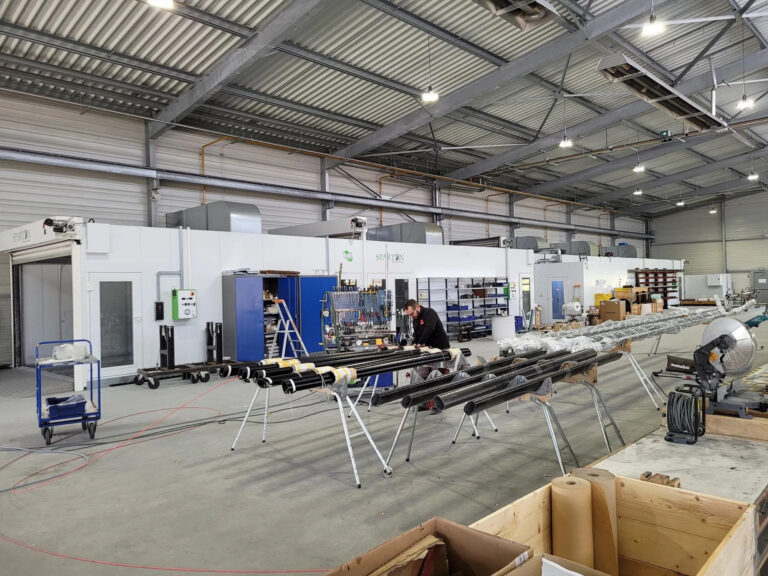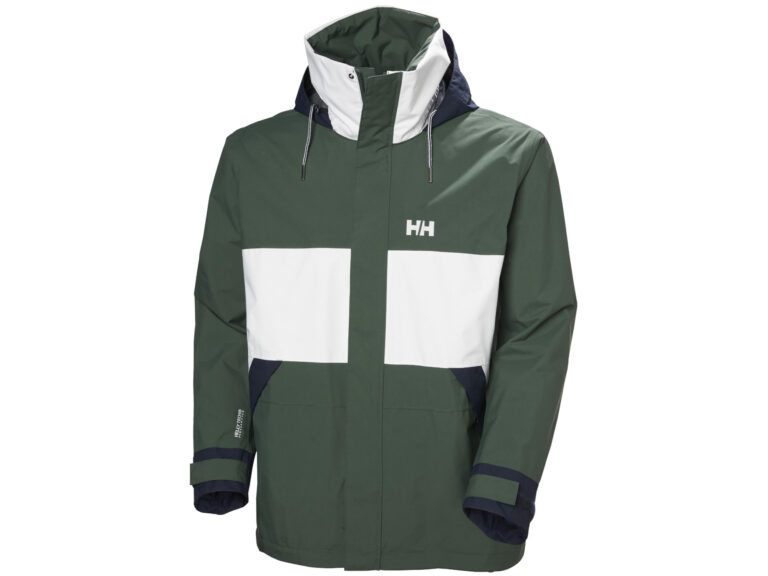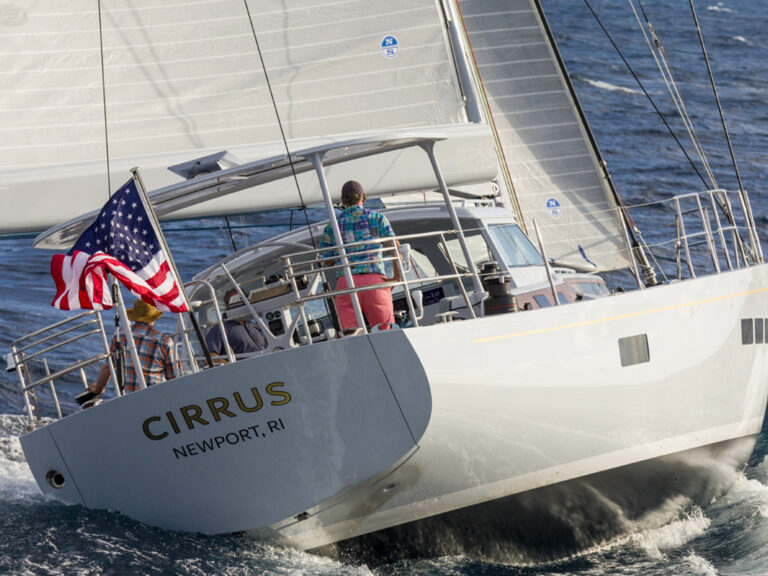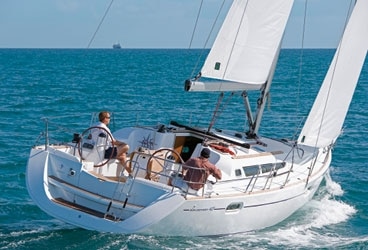
Jeanneau SO 42I 368
While walking storied South Beach after the close of the Strictly Sail Miami show last February, it struck me that both venues had at least this in common: Whether your tastes tend to the slender and sleek or the big, beamy, and comfortable, there was bound to be something that’d catch your eye in either location.
Joining the dozens of boats introduced in 2006 and the many more tried-and-true designs that still draw a crowd, builders brought seven new cruising models to the marina at Bayside this year. And although the Miami show is sometimes notable for the latest catamarans on display, five of the new sailboats boasted only one hull, and they ranged in length from 32 to 54 feet. One of the new cats, meanwhile, was new only in that its propulsion system-electric motors driven by a diesel generator-was unveiled for the first time.
The day I arrived, a brisk wind had battle flags snapping; temperatures dipping to the lower 40s F had the locals running for parkas-even the dogs were wearing sweaters. My colleagues and I, having come from the frozen north, weren’t sure what to make of it. But we were rarin’ to get on the water and sail these new boats. Meanwhile, although several dealers speculated that chilly weekend conditions were to blame for a light crowd, as the sun climbed and the mercury rose, the docks began to fill. Judging from reports in the weeks following the show, a few early-morning and late-day shivers had no chilling effect on sales, with several builders reporting ample business in the wake of the show.
A trio of 30-something-foot monohulls were among the boats making their debuts, and from a sailing and cruising standpoint, they couldn’t have been more different.
The Catalina 320 Mark II
Front and center at the Catalina display was the new 320 Mark II, brought to life by designer Gerry Douglas to update and improve upon a cruiser and club racer that in 13 years of production had sold more than 1,000 hulls.
Built from new molds and tooling, the Mark II features a pleasant, functional interior, a well-laid-out deck, easy sailhandling, and good performance, at least in the 8 to 12 knots of breeze we had for our test sail. In the redesign, Douglas added 18 inches to the width of the cockpit by pushing coamings outboard. On-deck hardware is mounted on pads to keep it out of any puddles, and fasteners are tapped into aluminum plates glassed into the deck. The Mark II features a double-spreader Selden rig with full-batten main, although the majority of boats being sold leave the factory with the optional in-mast furling main. A Schaefer headsail roller furler is standard.
While much about the 320 Mark II is new news, its hull, sail plan, and weight distribution remain the same. This means that the Mark II can race as a one-design against older Catalina 320s, and the boat’s been immediately accepted by the Catalina 320 International Association.
With four of us aboard under sail, we cruised along closehauled at a little better than 5 knots in about 12 knots of breeze. Later, cracked off to a reach in winds that dipped to 7.5 knots, we still managed to hold on to that 5-plus-knot pace. The boat’s powered by a Yanmar 30-horsepower diesel and cruises easily in the 6.5- to 7-knot range. It’s nimble, too, turning in its own length when moving along at a pretty good clip.
Below, an athwartships double berth aft and generous double in the V-berth would serve a family or a pair of couples well. With a crowd aboard, the tear-shaped dinette folds down to make a third double, and the settee opposite would make a fine single.
The Mark II we sailed had a shoal-draft wing keel, but a 6-foot-3-inch fin is available. With a price of about $115,000 delivered on the U.S. East Coast, the Catalina Mark II is likely to catch the attention of a new-boat hunter and might just offer enough in improvements to encourage the owner of an older model to go for a trade in.
The Alerion Express 33
Ever since the debut of the Alerion Express 28, Garry Hoyt and boatbuilder TPI have collaborated to reinterpret the design ideas of the late Carl Schumacher, first with the Alerion Express 38 and 20, and now with the 33, which was fresh out of the molds in time for Miami.
Ever the marketer, Hoyt refers to the Alerion experience as “select sailing,” meaning that the boat is easy to handle, a delight to sail, and can be used when the owner wants to be on the water and then easily put away at day’s end or when the weather takes the fun out of it.
With a name borrowed from Captain Nat Herreshoff and lines loosely adopted as well, the Alerion Express 33 has the full-battened, high-aspect, roachy main of her siblings and a self-tending jib brought under control by a Hoyt Jib Boom for easy handling. All sail-control lines lead aft to winches on either side of the wheel, where Hoyt, now in his 70s, easily raises and reefs sails himself.
Holding true to the tenets of the daysailer genre that the AE 28 invented, the 33’s deck isn’t cluttered with lifelines or pulpit, and the cockpit, which can seat eight comfortably, is the center of attention. By design, the boat is a couple of feet narrower than most cruisers its size, and the freeboard is low; together with a deep keel and a modern underbody, these elements combine to produce outstanding performance under sail.
In less than 10 knots of wind on Biscayne Bay, the AE 33 sailed closehauled at an impressive 6.5 knots, a pace it held off the wind, thanks to the Jib Boom, which keeps the headsail pulling long after it might be flapping on another boat. Should the wind drop or build too much for comfort, a 20-horsepower diesel can get you quickly back to the barn.
If you’re having enough fun to want to anchor out, there are accommodations below. Though standing headroom is lacking, there’s a table and a pair of settees in the main saloon-a space that’s finished off in “Herreshoff” style with white panels and varnished teak trim. Between saloon and V-berth, there’s a head to port that can be closed off for privacy. There’s also a small refrigerator forward in the cabin, along with a sink and single-burner butane stove for heating up a stew or coffee.
This elegant daysailer comes at a price-$235,000-but all the other Alerion Expresses already on the water suggest that there are many sailors willing to pay for the sort of sailing this boat will deliver.
The Sydney 36CR
At the other end of the spectrum from the traditionally laid-out Catalina and the gentlemanly daysailer mystique of the Alerion stood the Sydney 36CR, a new offering from Australia. Sporting a high-aspect spade rudder and 60-inch carbon-fiber wheel on one end, a bowsprit on the other, and a keel-stepped fractional rig with swept-back spreaders in between, the 36CR promises lots of speed for an owner who might want to race, spend the night, then cruise home the next day with friends and family. On a test sail before the show, the boat tracked nicely when the helm was left to itself and stood up well to its asymmetric headsail while reaching in building winds later in the day. The cockpit is well laid out, with sail-control lines running back to winches on the cabin top. Forward of the wheel are 6-foot-long seats for the crew.
Below, the interior’s white fiberglass finish is offset by trim of varnished Australian southern myrtle and a Flexiteak sole. Quarter berths run aft under the cockpit seats on either side of the companionway. Forward of these, there’s a nav station with a refrigerator under to starboard; opposite is a galley with small sink and two-burner propane stove and oven. A myrtle table with a fold-up leaf is in the heart of the saloon, flanked on either side by settees that could double as sea berths if lee cloths were added. Just aft of the comfortable-looking V-berth is a head and shower (with hot and cold pressure water) to port and a hanging locker opposite.
While a bit spartan below for some, the Sydney 36CR, priced at $232,000, offers a lot of performance and has the creature comforts below to serve up fast passages during a week’s cruise or longer.
The Jeanneau Sun Odyssey 42i
Jeanneau is another builder that fills its model lines with multiple offerings to fit a buyer’s needs and budget. In Miami, the company introduced the Sun Odyssey 42i, a handsome, stylish sibling to the SO 45i, SO 49i, and SO 39i.
All these boats feature injection-molded decks (indicated by the “i” in the name), a production technique that yields a finished surface top and bottom and a structure that’s strong and light, since resin is evenly distributed. On the water, this translates into a lower center of gravity and better sailing performance.
To test-sail this boat, we motored out through the chop in Government Cut, and once in open water, we headed north along South Beach as we set sail. The standard full-batten main had been replaced on this boat by an in-mast furling Selden rig, so there was no heavy halyard hauling to be done. The 135-percent genoa rolled out smoothly from the Profurl furler, and we were sailing.
The 42i has some much-appreciated traits for a cruiser. First and foremost, with the sails trimmed, she holds a course into the wind without a hand on the helm. We close-reached at a bit less than 6 knots over the ground in just 9 knots of wind, and the boat tacked easily side to side even from a beam reach. Off the wind, I would’ve liked to have played with the downwind sail that the company’s brochures hint at with its pictures of a bow sprit, but heck, sometimes you can’t have everything on a boat that was right out of the box.
Jeanneau does a good job with its deck layouts, and the 42i is no exception. Twin wheels mean easy boarding via the swim ladder and open transom. A fixed cockpit table, a good brace under way, is sized for entertaining in port. With lower shrouds placed inboard to the cabin house and uppers to chainplates on the hull, there’s no clutter when you move forward along the decks, which, like the coamings and cabin top, were finished with nonskid.
A buyer can choose from a couple of layouts below: a two-cabin/two-head layout, as on the boat we sailed, or a three-cabin/two-head model. Our boat had a head and a separate acrylic glass shower to port. And behind the shower was a finished storage space that could easily be used for a shop or a place to stash the kids.
The interior is finished in teak laminate and solid teak trim, which blends well with the light-colored upholstery and liner. The main saloon has a fully stocked galley to starboard and a nav station to port that slides forward when in use and aft and out of the way of the settee when not. Opposite the settee is a table and L-shaped couch that can be converted into a third double berth. The forward cabin has a V-berth, hanging locker, and head.
Designed for an owner who’s looking for a boat that can sail and pamper, the Jeanneau does both well. And priced at just more than $200,000, it won’t leave the cruising kitty too badly depleted.
The Hanse 540e
The biggest boat we sailed in Miami, the new Hanse 540e, is a super-sized 54-footer. Start with freeboard that’s a little better than 5 feet, add 16 feet of beam, headroom below sufficient for a basketball player, a cockpit that spills out to twin wheels, and an aft deck that could double as a dance floor, and you have an extraordinary craft. There’s even a transom garage big enough for a RIB, lawn chairs, and assorted other gear.
Thanks to its imposing scale, uncluttered teak decks, and a wedge-shaped cabin house, the 540e cuts a stylish figure topsides. And below, modern styling and furniture combine with mahogany woodwork, white bulkheads, and dark Corian counters to create a Euro look of luxury. To my eye, on hull number one, which I was sailing, it seemed almost stark. According to Don Walsh at Hanse Yachts US, the company has hired a designer, Design Unlimited, to soften some of those lines on future boats.
Throughout the 540e, details reflect Hanse founder Michael Schmidt’s beliefs about how the boat will-or should-be sailed. For instance, interior counters are all but void of fiddles, which, according to a company representative, is because Schmidt contends that most owners will choose to do their cooking in port, where things will stay put. And there’s a noticeable lack of handholds both below and topsides. On a test sail in fairly tame waters outside Government Cut, I found the absence of handholds a bit disconcerting; the area aft of the wheels seemed precarious and could have benefited from a seat or something to grab on to in a chop. But then again, with 41,000 pounds of displacement and 13,000 pounds of ballast, this boat didn’t really get pushed around much by the waves kicked up by a flotilla of passing powerboats.
For all its size, the 540e is intended for a couple or a couple with friends to sail with ease. The mainsail is raised up the 86-foot-tall mast with the push of a button, thanks to the self-tailing electric winch mounted just forward of one of the wheels; this drum is also used for trimming the main. The self-tacking jib’s sheet leads to a manual winch at the other wheel. This second winch can be easily upgraded, says Walsh, and in fact is being replaced by the owners who bought the boat at the show.
Sailing along at about 5.5 knots in 10 knots of breeze, the boat was easy to drive, and visibility was good from either wheel. Though more likely to be used in cruising mode, the boat’s self-tending jib combined with the power of the main hints at some competitive performance should one find oneself in a tacking duel. This isn’t surprising, since the boat’s performance hull was designed by Judel/Vrolijk & Co., the firm that shaped the hulls for America’s Cup champion Team Alinghi.
The “e” in 540e denotes the epoxy used in hull construction; it’s standard on all of Hanse’s larger boats. Base price for the boat, delivered to the U.S. East Coast, is just less than $500,000, but the model we sailed, with loads of teak and electronics, was priced at $635,000. While that’s a good chunk of money, it’s a whole lot of boat.
The Catamarans
The Moorings chose Miami to unveil the electric-powered version of its Robertson and Caine 4300 catamaran. The cat was developed for an owner by The Moorings, working in conjunction with Glacier Bay, which has installed its Ossa Powerlite direct-current propulsion system in the boat. Unlike the Lagoon 420 Hybrid (also at the show), which relies on motors driven by a bank of batteries that store power created by a generator or through propeller regeneration under sail, the Moorings 4300 Electric’s generator runs whenever the boat is being motored. It requires only the traditional bank of batteries to supply electricity for house needs.
While the 4300e has been in charter service for several months already in the B.V.I., performance tests are continuing, as is development of some elements of the drive system. Cruising World’s July 2007 issue will be devoted to catamarans, and in it you’ll find an in-depth look at these electricity-driven sailboats and reviews of how both the 4300e and the Lagoon Hybrid perform on the water.
Rounding out the new catamaran offerings in Miami was the Mahe 36, a performance-promising cruising cat from Fountaine Pajot. The boat that CW tested on Biscayne Bay-a three-cabin version-easily topped 9 knots while close-reaching, proving that comfort doesn’t necessarily interfere with fun. You’ll find a complete review of the Mahe in next month’s issue.
Reviews on the Web
www.cruisingworld.com/0607/alerionexpress33
www.cruisingworld.com/0607/catalina320markII
www.cruisingworld.com/0607/hanse540e
www.cruisingworld.com/0607/jean
Mark Pillsbury is CW’s senior editor. Associate editor Andrew Burton and contributing editor Jeremy McGeary also assisted with this story.

